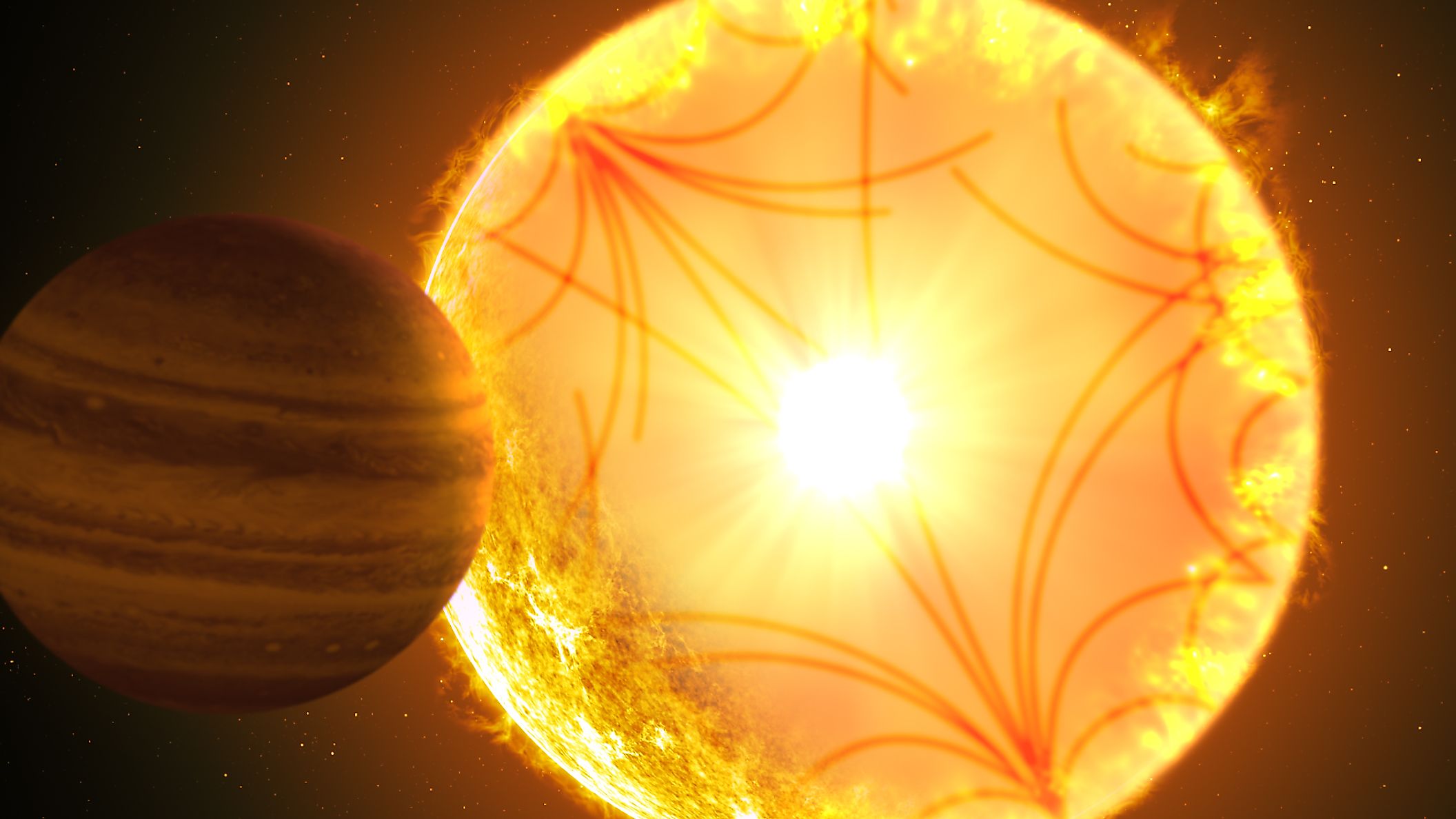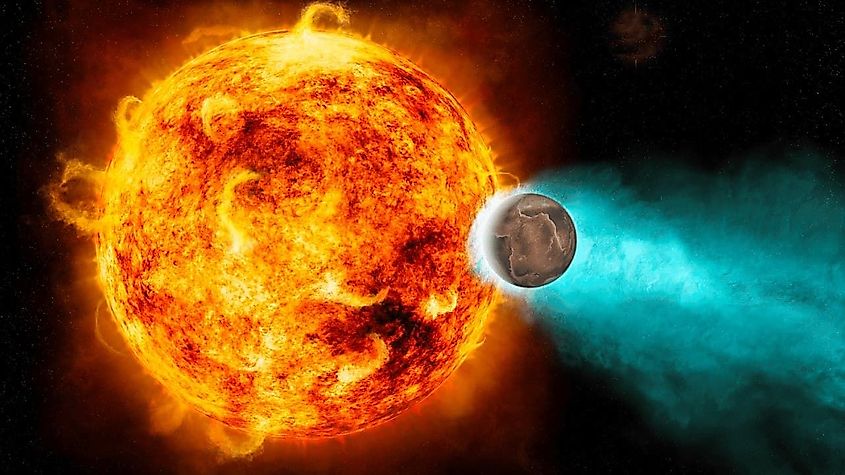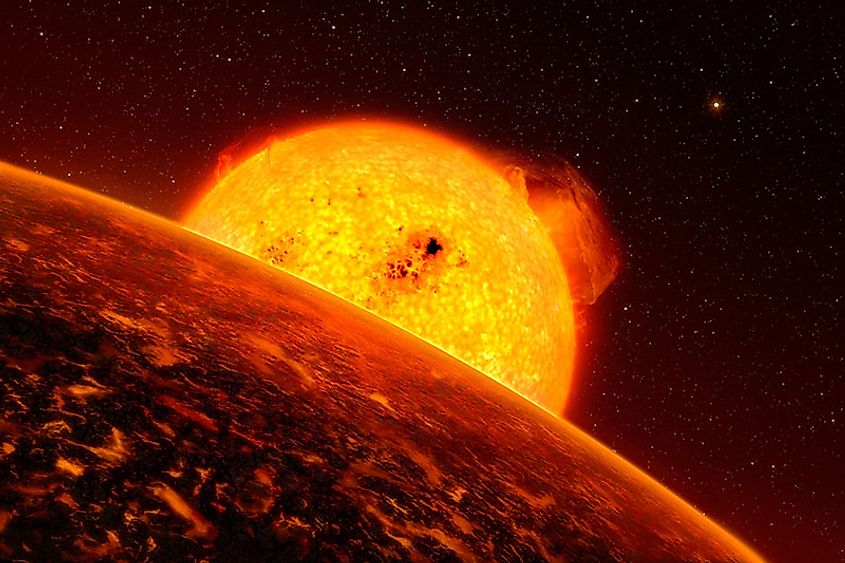
Scientists Find Planet Spiralling Towards Its Star
Scientists have recently uncovered an exoplanet that is currently spiralling towards its host star, a first-ever discovery in planetary science. The exoplanet is designated as Kepler-1658b and is located approximately 2,500-light years away. Kepler-1658b is classified as a hot-Jupiter, a type of Jupiter-sized planet that orbits exceedingly close to its parent star. The host star of Kepler-1658b, called Kepler-1658, was once not so different from our sun, yet it has since entered into the final stages of its life and is currently swelling to become a red giant star. As the star becomes larger, the orbit of Kepler-1658b is getting smaller, and astronomers estimate that sometime in the next three-million years, Kepler-1658b will be devoured by the star.
The End of a Star’s Life

While stars come in a wide variety of different types, one thing they all have in common is that their days are numbered. Every star will one day meet its end when they run out of fuel. In the case of a star, that fuel comes in the form of hydrogen that is fused together in a star’s core to produce energy. Once a star begins to run out of hydrogen fuel, it will enter the final stages of its lifecycle. How a star evolves will be dependent upon its mass. High mass stars will explode as mighty supernovae, while lower mass stars will swell into red giants, eventually blowing off their outer layers. Our sun, which is a middle-mass star, will eventually run out of hydrogen and evolve into a red giant. It will swell many times larger than its original size and may even become large enough to devour the Earth. Kepler-1658b is currently orbiting a star that is entering the red giant phase, and its days are numbered as a result.
A Glimpse of the Future

Kepler-1658b potentially offers us a glimpse of the future of our own world. Since the host star of Kepler-1658b is similar to our sun, the fate of the sun will likely be analogous to that of Kepler-1658. As the sun eventually evolves towards becoming a red giant, it will likely engulf the orbits of Mercury, Venus, and perhaps even Earth. By observing worlds like Kepler-1658b, we can get some kind of idea as to how our solar system will evolve as the sun enters the final stages of its life. Like how Kepler-1658b will be devoured by its star, Earth will likely be engulfed by the sun when it runs out of fuel 4.5-billion years from now.











